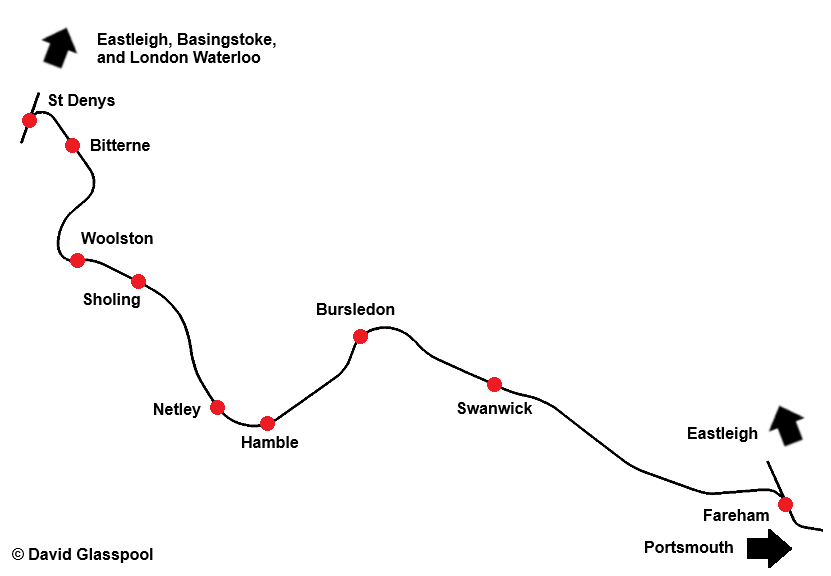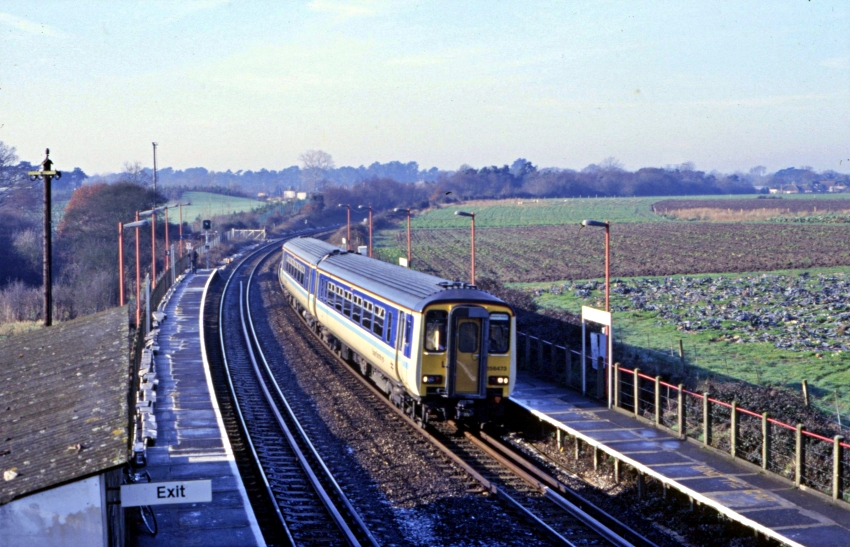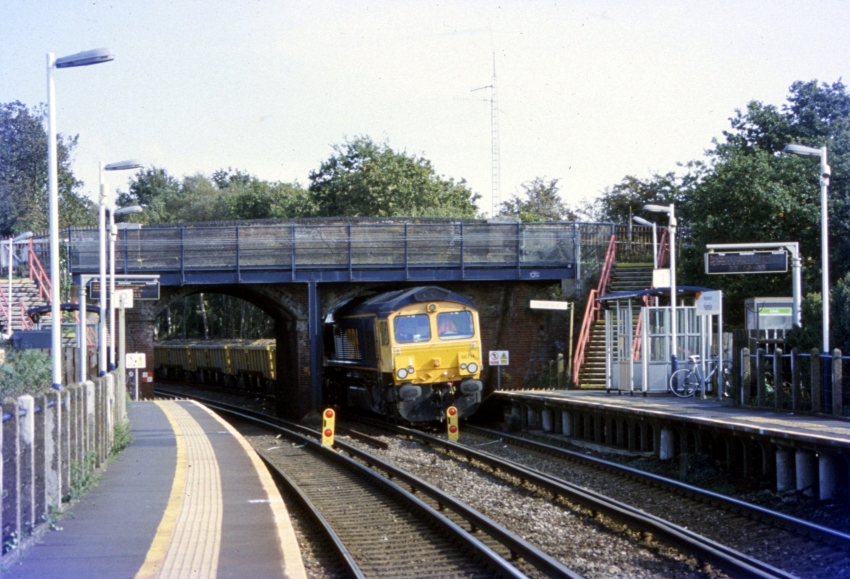Hamble Halt
The section of line from Southampton (St Denys) to Netley opened to public traffic as a single track on Monday, 5th March 1866 (ref: The Railway News, 10th March 1866), and between the latter and Fareham on 2nd September 1889 (ref: Bradshaw’s Railway Manual Shareholders’ Guide, and Official Directory for 1892). Doubling of the line between St Denys and Netley was completed in 1910 (ref: The Railway Times, 30th July 1910), and onwards to Fareham the following year (ref: The Hampshire Post, 12th May 1911). However, Hamble Halt was a much later affair, the station — situated in-between Netley and Bursledon, 7-miles 19-chains from Southampton — opening to passenger traffic on Sunday, 18th January 1942 (ref: Hampshire Telegraph & Post, 23rd January 1942).
Hamble is a village that lies on the eastern side of Southampton Water, at the point where the River Hamble joins the former. In November 1923, construction began on an oil storage depot on the village’s eastern side, under the auspices of Shell Mex Ltd (ref: Western Daily Press, 24th November 1923). Provision was made for oil delivery by water, road, and rail — a single-track connection with the Southern Railway (SR), ½-mile south east of Netley, being made — a series of sidings were laid (ref: Western Daily Press, 24th November 1923), and the cost of the scheme was priced at £200,000 (ref: The Hampshire Advertiser, 22nd December 1923). On 14th April 1931, a flying school opened at Hamble under the name Air Services Training, Limited, staffed entirely by ex-officers of the Royal Air Force (ref: The Evening News (London), 14th April 1931). The school trained men and women to become qualified pilots within the space of twelve weeks, each individual paying £358 (£32,810 at 2024 prices), which included 37 hours of actual flying and approximately 180 hours in workshops and classrooms (ref: The Evening News (London), 14th April 1931).
Hamble Halt was provided with two platforms built from prefabricated concrete components, these surely being cast at the SR’s works at Exmouth Junction. Lighting along the platforms was supported upon concrete bracket lampposts, and waiting shelters were present on either side. With reference to the latter, these were study structures built from concrete blocks, the shelter on the Netley-bound platform — a part of which is just visible in the below picture from 1989 — being about twice the length of its counterpart opposite. A footbridge linked the platforms at their eastern ends — period maps show that a footbridge was in place many years before the station, attached to a road bridge, so perhaps the existing structure was incorporated.
From 13th September 1964, Hamble Halt was closed on Sundays (ref: Evening News (London), 19th August 1964). In the June 1969 edition of the RCTS’ The Railway Observer magazine, it was reported that the word Halt had been discontinued in general with the introduction of British Rail’s (BR) then new timetable, effective 5th May of that year; thus, the station became plain Hamble.
By 1983, the connection with Hamble Oil Storage Depot saw little use. It was reported in the March 1983 edition of the RCTS’ The Railway Observer magazine that the only train scheduled to call at that time was the 13:45ThO Eastleigh East Yard to Southampton Down Yard via Fareham freight. In 1990, the Southampton to Portsmouth line via Netley and Fareham was electrified, the power being switched on during Monday, 12th March 1990 (ref: Branch Line News No. 633, 17th May 1990). Scheduled electric services were officially launched on 9th May 1990, although the full timetable came into force on 14th of that month (ref: RCTS' The Railway Observer, July 1990).
As the photograph below attests, the original shelters — at least that on the Netley-bound platform — remained standing into 1989. By 1996, they had gone, their place being taken by glazed "bus shelter" style structures. The latter themselves had been replaced by 2004 by Paragon anti-vandal waiting shelters manufactured by contractor Macemain Amstad.

29th January 1989

Concrete components in connection with electrification are seen on the St Denys-bound platform in this westward view, which captures a Westbury to Portsmouth Harbour service in the form of Class 156 "Super Sprinter" No. 156473. At the bottom left is one of the original waiting shelters, which was demolished not long after this picture was taken. In the background, the single trailing connection with the oil storage depot from the St Denys-bound track is still evident, complete with gate protecting the entrance. The running lines widen towards the camera for the twin-arch road bridge. © David Glasspool Collection
November 2004

An eastward view shows Class 66 No. 66714 “Cromer Lifeboat” during an engineering possession. The prefabricated concrete platforms and footbridge are original features; the oldest structure is the twin-arch bridge behind. The waiting shelters seen here are a standard design by contractor "Macemain Amstad", which started appearing at stations across the country around the time this picture was taken. © David Glasspool Collection
Return to the Kent Rail Homepage or alternatively, check for Updates.
Website & Copyright information - Links - Contact the Webmaster
